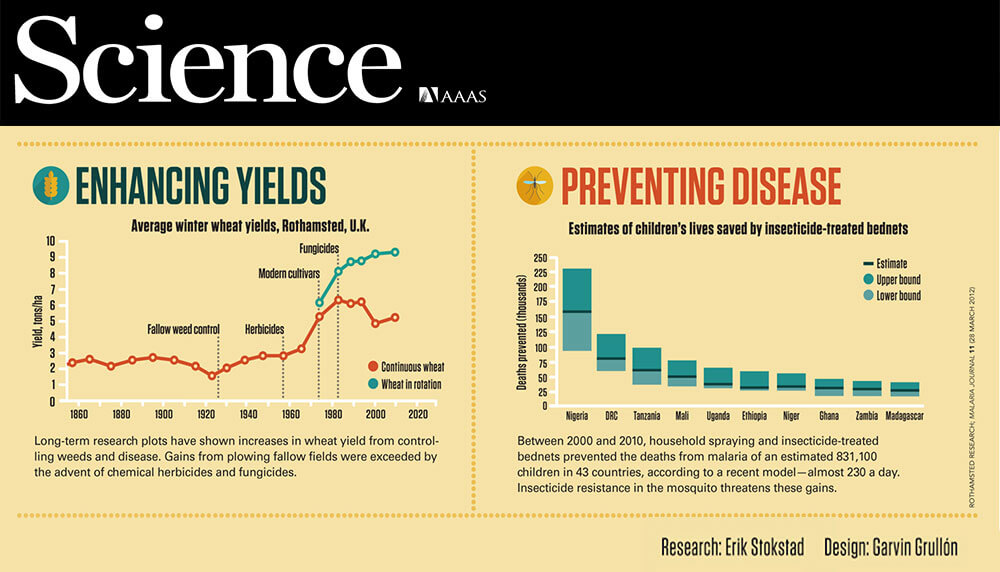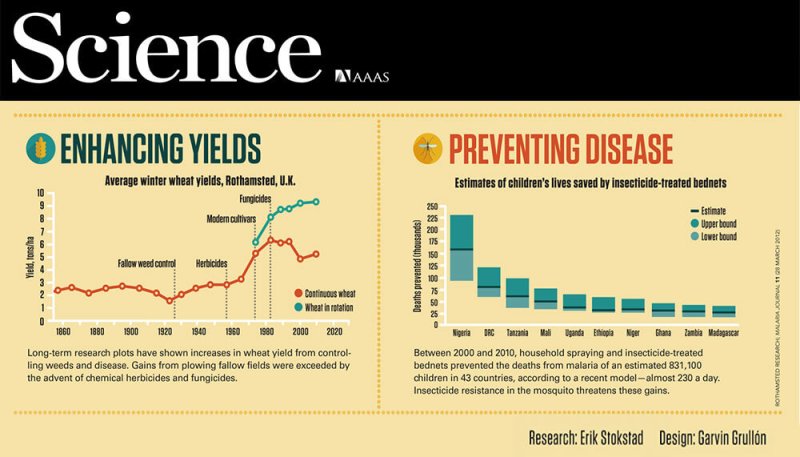Long-term research plots have shown increases in wheat yield from controlling weeds and disease. Gains from plowing fallow fields were exceeded by the advent of chemical herbicides and fungicides.
Between 2000 and 2010, household spraying and insecticide-treated bednets prevented the deaths from malaria of an estimated 831,100 children in 43 countries, according to a recent model—almost 230 a day. Insecticide resistance in mosquitoes threaten these gains.
































